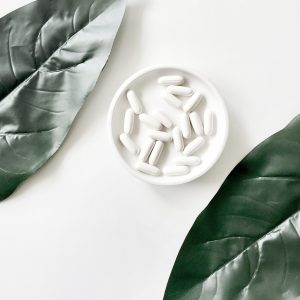Kratom is a tropical tree and a member of the coffee family indigenous to Thailand, the Philippines, Malaysia, Myanmar, and other countries throughout South Asia.
In low doses, the leaves of this plant have stimulant properties. In higher doses, kratom leaves act as a sedative. Kratom is also used for pain management, although its use in this capacity is not clinically proven. Many people use kratom for opiate withdrawal.
There are no FDA-approved uses for kratom. The U.S. Food and Drug Administration identified kratom on two important alerts dating back to 2012 and continues to recommend that people refrain from using kratom.
WHAT IS KRATOM?

There are many names for kratom, including:
- Ketum
- Herbal speedball
- Kahuam
- Biak-biak
- Ithang
- Thom
The scientific name for kratom is Mitragyna speciosa. This is a tropical tree that grows profusely throughout Thailand, Indonesia, and Malaysia.
Kratom is used in parts of Asia as a mood enhancer and also for the treatment of:
- Pain
- Fever
- Cough
- Diarrhea
The dark green leaves of the kratom plant are dried and then powdered or crushed. People add the dried kratom leaves to tea or smoke the powder. The leaves have psychotropic properties, meaning that while kratom is legal, it is also a mind-altering substance.
Up to 5 million people in the United States use kratom and it comes in many different forms, colors, and sizes, such as white kratom.
Small doses of kratom induce stimulant effects. At higher doses, kratom brings about effects similar to the effects of opioids. According to the FDA, kratom may impact the same opioid receptors as morphine. For these reasons, many people mistakenly believe kratom is an opioid rather than an evergreen plant from the coffee family.
Is kratom addictive, then?
DOES KRATOM CAUSE PHYSICAL DEPENDENCE?
Kratom has the potential for abuse and addiction. Current research suggests that kratom is less addictive than opioid painkillers.
When kratom is used regularly and long-term, the following adverse side effects can manifest:
- Appetite changes
- Weight loss
- Disrupted sleep cycles
- Social problems caused by kratom use
- Physical dependence
When you become physically dependent on kratom, you will experience unpleasant withdrawal symptoms and intense cravings for kratom in the absence of the substance.
WHAT ARE THE WITHDRAWAL SYMPTOMS ASSOCIATED WITH KRATOM?

Research shows that kratom withdrawal lasts from 3 to 10 days, producing adverse effects like nausea, muscle aches, and cravings for kratom.
When you introduce a substance like kratom into your system, your brain chemistry is altered. All substance use disorders lead to changes in the structure and function of the brain, and kratom is no different.
Researchers believe that kratom works on opiate receptors in a similar way to morphine, and kratom withdrawal is resultantly similar to opioid withdrawal. That said, some research shows that kratom withdrawal is not as intense or long-lasting as opioid withdrawal.
How bad is kratom withdrawal, then?
Well, the good news is that kratom withdrawal is not dangerous. Most people detoxing from sustained kratom use experience mild symptoms in line with a bad cold.
Anyone with previous substance abuse issues should seek medical advice before suddenly quitting kratom.
Those who have been using kratom to stop using opioids are at heightened risk of relapse. The way in which tolerance to opioids shifts so swiftly means that opioid relapse can easily lead to a fatal opioid overdose.
Kratom withdrawal can trigger the following adverse psychological effects:
- Depression
- Anxiety
- Insomnia
- Mood changes
- Irritability
- Agitation
You can also expect to experience any or all of the following physical symptoms of kratom withdrawal:
Kratom withdrawal symptoms
- Nausea
- Vomiting
- Changes to blood pressure and heart rate
- Decreased appetite
- Muscle aches
- Fever
- Sweating
- Hot flashes
- Severe abdominal cramps
- Watery eyes
- Runny nose
- Jerky movements
- Diarrhea
- Blurred vision
- Dilated pupils
- Seizures
So, now you know what to expect from kratom withdrawal, how long does it last?
Not everyone using kratom develops dependence on the substance, and not everyone will experience kratom withdrawal either.
The more kratom you use, the greater your risk of both dependence and withdrawal. As a rough benchmark, using more than 5 grams each day is liable to induce negative outcomes.
If you have been using kratom to self-medicate symptoms of pain, or if you have been using the substance to lessen the withdrawal symptoms of other substances, you are at heightened risk of becoming dependent and suffering withdrawal symptoms when quitting kratom.
Kratom Sleep Issues
KRATOM WITHDRAWAL TIMELINE
The onset and duration of your kratom withdrawal experience will depend on how much of the substance you were using, and how long you were using it for.
The size of your last dose also influences when the effects of the drug subside, and how quickly withdrawal sets in.
Occasionally, symptoms manifest within a few hours of your last kratom dose.
More often, though, the first symptoms of withdrawal present within 12 hours to 24 hours of your last dose.
Data show that kratom withdrawal lasts from 3 to 10 days.
Even for those heavily dependent on kratom, withdrawal symptoms should dissipate within a week or so.
There are some anecdotal reports of those using kratom heavily experiencing PAWS (post-acute withdrawal syndrome) characterized by depression, insomnia, and anxiety, although more research is needed in this area. You can find anecdotal evidence in kratom withdrawal reddit threads.
- First 12 hours of kratom withdrawal: Anxiety, depression, flu-like symptoms.
- Days 1 to 3 of kratom withdrawal: Withdrawal symptoms will peak, and the risk of relapse is greatest during this phase of withdrawal.
- Days 4 to 7 of kratom withdrawal: The more severe symptoms of kratom withdrawal will dissipate and detox is complete.
WHAT ARE THE RISKS INVOLVED WHEN USING KRATOM?
A 2017 study examined the potential benefits and risks of kratom.
Researchers discovered that kratom has some stimulant effects, some negative effects, and may potentially be effective for treating depression.
Using kratom can also trigger the following serious adverse outcomes:
- Memory loss
- Seizure
- Coma
- Death
Beyond this, kratom use can bring about the following physical and psychological side effects:
- Aggression
- Hostility
- Dry mouth
- Euphoria
- Vomiting
- Jerky body movements
- Psychosis
The effects of kratom kick in quickly. Feelings of calmness and happiness occur between 5 and 10 minutes after using kratom.
Sustained kratom use can trigger the following adverse effects:
- Nausea
- Itching
- Sweating
- Constipation
- Sleep disruption
- Erectile dysfunction
- Hair loss
It is possible to overdose on kratom, but kratom overdoses are not commonly reported in the United States.
Reports of deaths associated with kratom typically involve the use of other drugs. NIDA (National Institute on Drug Abuse) reports that 9 of the 11 deaths associated with exposure to kratom also involved the following substances:
- Alcohol
- Caffeine
- Benzodiazepines
- Cocaine
- Fentanyl
CDC (Centers for Disease Control and Prevention) reports a dramatic increase in calls to poison centers linked to the use of kratom from 2010 to 2015.
Just two of the kratom deaths reported in the U.S. between 2011 and 2017 were attributed to kratom use in isolation.
There is insufficient evidence to establish the long-term effects of abusing kratom.
Some case studies indicate that the sustained use of large quantities of kratom is associated with:
- Kidney injury
- Acute liver damage
- Cardiovascular complications
- Drug-induced hepatitis
- Seizures
KRATOM WITHDRAWAL TREATMENT
Fortunately, there are several practical steps you can take to ease the symptoms of kratom withdrawal.
- OTC antidiarrheal medication: Taking over-the-counter antidiarrheal medication like Pepto-Bismol or Imodium can mitigate the diarrhea associated with kratom withdrawal.
- OTC pain reliever: Taking an OTC pain reliever like Tylenol or ibuprofen can soothe both fever and muscle aches, both common symptoms of kratom withdrawal.
- OTC antiemetic: Antiemetic medication like Dramamine can help lessen the vomiting and nausea that comes with kratom detox.
- Eat little and often: Try eating small and frequent meals. Stick to bland food to minimize vomiting and nausea, while at the same time easing stomach discomfort.
- Stay fully hydrated: Vomiting and diarrhea, as well as excessive sweating – all common symptoms of kratom withdrawal – easily causes dehydration. Drink lots of water to combat this. Consider a rehydrating supplement.
- Practice relaxation techniques: From mindfulness and breathing exercises to meditation and yoga, there are many ways to help alleviate the insomnia, anxiety, and pain accompanying kratom withdrawal.
- Speak with your doctor: If you are concerned about withdrawing from kratom at home, talk with your primary healthcare provider and voice your concerns.
ADDICTION RECOVERY AT GRATITUDE LODGE IN SOUTHERN CALIFORNIA
We offer inpatient and outpatient treatment for all types of addictions and mental health disorders here at Gratitude Lodge. We have pet-friendly and inclusive luxury rehab centers located in Long Beach, Newport Beach, and San Diego.
Initiate your recovery from kratom addiction by engaging with a supervised medical detox at one of our Southern Californian locations. You can then transition directly into a 30-day inpatient program or an IOP (intensive outpatient program).
Your treatment team at Gratitude Lodge will personalize a treatment plan from the following interventions and therapies:
- MAT (medication-assisted treatment)
- Individual counseling
- Group counseling
- Psychotherapies (CBT and DBT)
- Family therapy
- Daily meetings
- 12-step immersion program
- Holistic therapy
When you are ready to move beyond kratom abuse, reach out to Gratitude Lodge by calling 800-994-2184.











